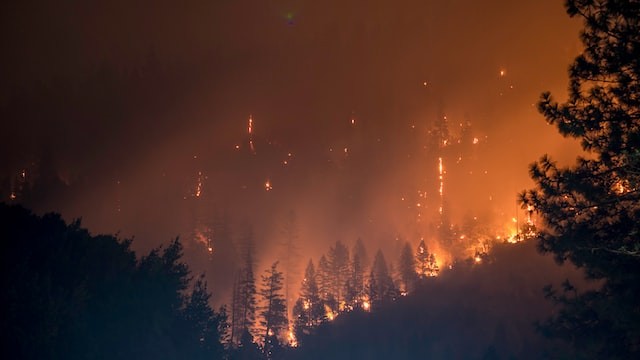According to a new study, smoke particles from human-lit fires are responsible for more than 80% of all smoke-related deaths each year.
Based on the study, smoke pollution is on the rise, reducing air quality and leading to more illnesses and premature deaths.
US deaths caused by human-ignited fires
 (Photo : Matt Howard/Unsplash)
(Photo : Matt Howard/Unsplash)

The new study, led by Massachusetts Institute of Technology researchers, examines the impact of smoke particles on air quality in the United States.
According to their findings, human-caused fires account for more than 67% of small smoke particles known as PM2.5 in the United States.
These particles have been linked to respiratory illnesses and premature death due to their ability to degrade air quality.
The number of fires in the United States is increasing.
According to the research team, smoke from human-ignited fires was responsible for 20,000 premature deaths in 2018, a year with a high frequency of fire events, a significant portion of which were associated with human ignitions such as agricultural and human-lit fires.
This is a 270% increase from 2003 when there was a low frequency of fire events.
According to the study, there are much higher concentrations of smoke PM2.5 in the air during high fire activity years.
"Fires not only threaten human lives, infrastructure, and ecosystems, but they are also a major cause of concern in terms of air quality," said Dr. Therese Carter, lead author of the study.
High levels of smoke exposure can negatively impact human health, resulting in conditions such as respiratory infections, lung cancer, heart disease, and even premature births.
"Our results show that a large and significant portion of harmful smoke particles results directly from human liability," Carter added, as per ScienceDaily.
The researchers used the Global Fire Emissions Database to calculate agricultural fire emissions before categorizing them as human or natural ignition.
The team recommended an ignition-focused approach to limiting the devastating effects of pollution from small smoke particles.
State agencies can implement management plans to limit the ignition of agricultural fires to times when weather conditions would have the least impact on public health.
Human-caused wildfires, on the other hand, are much more difficult to control due to their sporadic and unplanned nature.
Carter concluded that humans can play a critical role in reducing PM2.5 concentrations and that policies, regulations, and management plans should be put in place to reduce human-caused fires.
To be more effective, efforts to reduce human-caused fires should concentrate on specific regions and ignition types.
The first step toward a cleaner, healthier future is identifying and acknowledging the sources of these particles.
Also Read: Land-Clearing Smoke Linked to Stronger Tornadoes?
Smoke is harmful to your health
The smoke produced by any type of fire (forest, brush, crop, structure, tires, waste, or wood burning) is a mixture of particles and chemicals produced by the incomplete combustion of carbon-containing materials, as per the New York State Department of Health.
All smoke contains carbon monoxide, carbon dioxide, and particulate matter (PM or soot).
Many different chemicals can be found in smoke, including aldehydes, acid gases, sulfur dioxide, nitrogen oxides, polycyclic aromatic hydrocarbons (PAHs), benzene, toluene, styrene, metals, and dioxins.
The type and number of particles and chemicals in smoke vary depending on what is burning, how much oxygen is available, and the burn temperature.
High levels of smoke exposure should be avoided.
If exposure to high levels of smoke cannot be avoided, individuals are advised to limit their physical exertion.
Individuals with cardiovascular or respiratory conditions (such as asthma), fetuses, infants, young children, and the elderly may be more vulnerable to the health effects of smoking.
Short-term (acute) effects can result from inhaling smoke, which is irritant to the eyes, nose, and throat, and its odor is potentially nauseating.
According to studies, some people who have been exposed to a lot of smoke experience temporary changes in lung function, making breathing more difficult.
Carbon monoxide gas and very small particles are two of the major agents in smoke that can cause health effects (fine particles, or PM2.5)
Individual particles are too small to be seen with the naked eye and are two and a half (2.5) microns or less in size (25,400 microns equals an inch).
Carbon monoxide consumption reduces the body's oxygen supply. This can cause headaches, reduce alertness, and aggravate angina, a heart condition.
Fine particles can penetrate deep into the respiratory tract and reach the lungs.
Inhaling fine particles can have a number of negative health effects, including respiratory irritation and shortness of breath, and can aggravate medical conditions like asthma and heart disease.
Exposure to carbon monoxide and particulate matter during increased physical exertion can exacerbate cardiovascular effects.
When exposed to carbon monoxide or fine particles, symptoms generally fade, but may persist for a few days.
© 2024 NatureWorldNews.com All rights reserved. Do not reproduce without permission.





